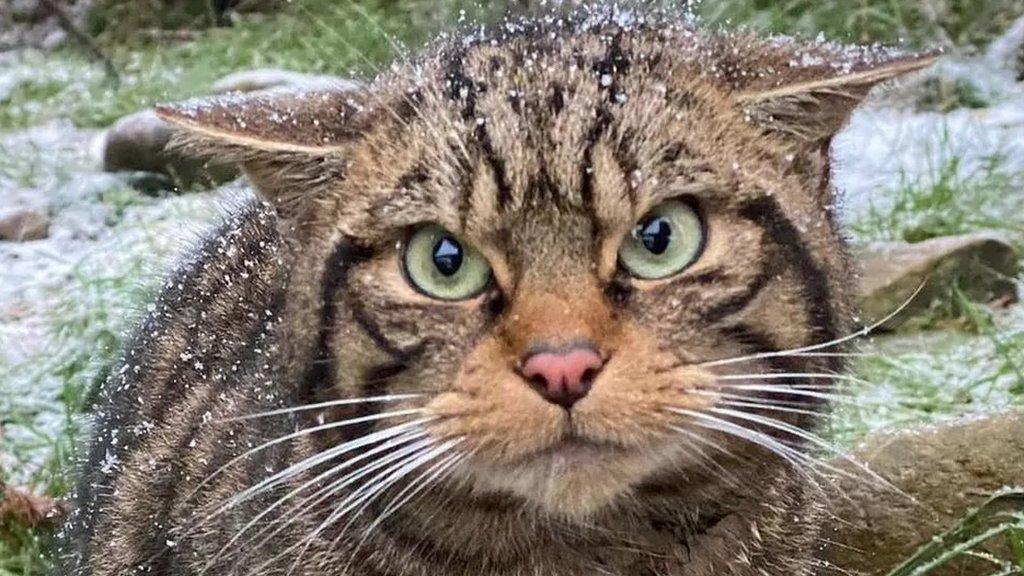Scottish wildcats will be released in country's largest national park
- Published
- comments

The wildcat population in Scotland is currently under threat
Wildcats will be released in Scotland's largest national park this summer.
It follows the approval of a licence application from the conservation project Saving Wildcats, which a number of organisations are involved in.
The animals will be relocated from the Royal Zoological Society of Scotland's (RZSS) Highland Wildlife Park where they've been breed, to a site in Cairngorms National Park.
The Saving Wildcats project, which applied for the licence in September last year, says it plans to release around 20 wildcats each year, with the first trial release planned for June 2023.
Meet the wildcat kittens born to help save the species
Dr Helen Senn who is the Saving Wildcats project lead and the head of conservation at the Royal Zoological Society of Scotland's (RZSS) Highland Wildlife Park said the animals will be monitored using GPS collars after they're released.
She said the chosen site provides "a suitable mix of habitats and potential prey for the species".
There are thought to be 40 known species of wildcats in the world.
Like the name suggests, they live in the wild in mountains, forests, or woods.
The European wildcat, which is the type found in Scotland, is about the size of a large domestic cat.
They typically have wider faces compared to the types of cats we have as pets, wide set ears, longer fur and thicker tails with blunt ends.
The Scottish government agency NatureScot, which approved the licence, said the decision is the first time wildcats will be moved from one location to another for conservation purposes in the UK.
It said it hopes the project will help restore Scotland's critically-endangered wildcat population which is currently under threat.
"Habitat loss, persecution and hybridisation with domestic cats has brought the Scottish wildcat population to the brink of extinction," said NatureScot's head of biodiversity Dr Katherine Leys.
"The Saving Wildcats partnership has been a lifeline for the species and our decision to grant a translocation licence to allow wildcats to be released in the Highlands of Scotland marks a crucial point in the long journey towards conserving this iconic species."
The wildcats will be released in Cairngorms National Park
The agency also said that while the project will benefit the species, there are risks and challenges that come with relocating predators and its success will rely on the support of local communities.
"This journey is not without difficulty, and we know that there are more hurdles to overcome before we reach the point where we are ready to release the wildcats into carefully selected areas of the Cairngorms National Park," Dr Katherine explained.
"Once there, the wildcats will face further challenges, so it's crucial the project continues to work with local communities, farmers, land-owners and cat owners to ensure wildcats are given the best chance to survive and thrive."
- Published18 February 2023
- Published21 May 2021
- Published22 May 2022
